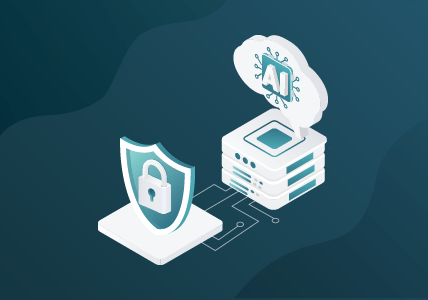A Unified Approach to Observability and Security
Recently, I had the opportunity to attend an insightful Gigamon Visualyze Bootcamp keynote by IDC Group Vice President, IT Operations, Observability, and CloudOps, Stephen Elliot, focusing on the intersection of observability and security. As someone entrenched in infrastructure and operations (I&O) and security operations, I found the session incredibly relevant, especially in understanding how these two areas, while distinct, are interwoven in today’s complex hybrid cloud IT environments.
Common Threads in Observability and Security
Elliot’s keynote revolved around several core themes that are crucial for both I&O and SecOps teams. The key message was clear: Observability and security are two sides of the same coin. To effectively secure and manage modern hybrid cloud IT environments, we must recognize how these aspects are interdependent and need to be approached with a unified strategy.
1. The Need for Holistic Data Integration
One of the primary challenges discussed was the issue of tool proliferation and data silos. In today’s multi-cloud, hybrid environments, it’s common for organizations to deploy a myriad of tools, each collecting different types of data — metrics, logs, traces, and events. This fragmented approach can lead to significant hurdles in achieving a comprehensive view of the IT landscape.
From an I&O perspective, this means that network operations teams are inundated with data signals critical for maintaining performance and security. Similarly, SecOps teams are gathering their own sets of data to identify and mitigate threats. The lack of integration between these datasets often leads to inefficiencies and delays in incident response.
Elliot highlighted the necessity of breaking down these silos. By developing observability pipelines and consolidating data across different tools and teams, we can gain a more unified view of the IT infrastructure. This not only streamlines incident management but also enhances the ability to correlate events and identify issues faster.
2. Automation and Its Strategic Importance
Another major theme was the role of automation. In a complex IT environment, manual processes can become a bottleneck, leading to slower response times and increased risk. Elliot emphasized that while many teams have implemented automation within their own silos, there is often a lack of cross-team automation.
For I&O teams, this means automating routine network management tasks, while SecOps teams could benefit from automating threat detection and response. The real power, however, comes from bringing these automated processes together across teams. For instance, an automated alert in the network operations domain can trigger an immediate response in the security domain if it indicates a potential threat.
3. Improving Incident Response Through Collaboration
The session underscored the importance of collaboration among network operations, security, IT operations, and DevOps teams. During incidents, having a shared understanding and access to the same data is crucial. Elliot pointed out that often the data needed to resolve issues is either incomplete or inaccessible to the team that needs it the most.
In practice, this means setting up systems that enable seamless data sharing and communication between teams. For example, if a network anomaly is detected, network operations should be able to instantly share relevant data with the security team to assess if it’s a security threat. This collaborative approach reduces the time to resolution and enhances overall operational efficiency.
4. Balancing Security with Performance
Elliot also discussed the challenge of balancing security with performance. Security measures can sometimes impair system performance and vice versa. The goal is to implement security controls that do not unduly affect performance while ensuring that systems remain secure.
For those of us in I&O and SecOps, this means adopting solutions that provide both performance and security insights. By understanding how performance issues may relate to security vulnerabilities and vice versa, we can make more informed decisions about where to focus our efforts.
The Role of Network Context in Observability and Security
A significant takeaway from the keynote was the role of network context in enhancing observability and security. The network provides a crucial layer of context that can inform security operations and vice versa. For instance, network data can offer insights into the origin and nature of potential security threats, such as unusual traffic patterns that might indicate a ransomware attack. Conversely, security teams can use network-derived intelligence and insights to understand the impact of a threat and prioritize their responses accordingly.
Conclusion
Stephen Elliot’s keynote provided a compelling look into how observability and security are interconnected and why a unified approach is essential for success. For I&O and SecOps teams, the message was clear: Break down silos, automate processes, collaborate effectively, and leverage network context to enhance both performance and security. In today’s fast-paced digital landscape, integrating these elements not only improves operational efficiency but also fortifies the security posture. By aligning our strategies and tools, we can better navigate the complexities of modern hybrid cloud IT environments and drive toward a more secure and reliable infrastructure.
View the full IDC keynote below for more practical insights and best practices.
Featured Webinars
Hear from our experts on the latest trends and best practices to optimize your network visibility and analysis.

CONTINUE THE DISCUSSION
People are talking about this in the Gigamon Community’s Security group.
Share your thoughts today








